This article contains light spoilers for Thor: Love and Thunder in its discussion of its framing as a kids movie.
Thor: Love and Thunder is something of an overstuffed mess of a movie, but it hones on something fascinating about the Thor franchise in particular and superhero movies in general.
As a director, Taika Waititi is often focused on the experiences of children. Waititi first came to international prominence with his short film, Two Cars, One Night. The film tells the story of three children (Rangi Ngamoki, Hutini Waikato, and Te Ahiwaru Ngamoki-Richards) who spend an evening together in the carpark of the local pub. It is an oddly sweet and tender take on childhood in rural New Zealand, and it earned Waititi a nomination for the Best Short Film Oscar.
Waititi would return time and again to childhood in his feature films. Boy, the story of a young Māori child (James Rolleston), would go on to become the highest-grossing local film at the New Zealand box office. Hunt for the Wilderpeople earned international acclaim as the story of juvenile delinquent Ricky Baker (Julian Dennison). Waititi would eventually win a Best Original Screenplay Oscar for Jojo Rabbit, the story of a young boy (Roman Griffin Davis) coming of age in Nazi Germany.
As such, it is probably no surprise that the aspect of Thor: Love and Thunder that works most effectively is the way in which Waititi consciously and deliberately positions the superhero sequel as a film aimed at children. Given that Waititi oversaw the transformation of Thor: Ragnarok into a “70s/80s sci-fi fantasy” and approved of the 1980s trailer remix, it is no surprise that Love and Thunder works best when it feels like some long-lost children’s film from the 1980s.
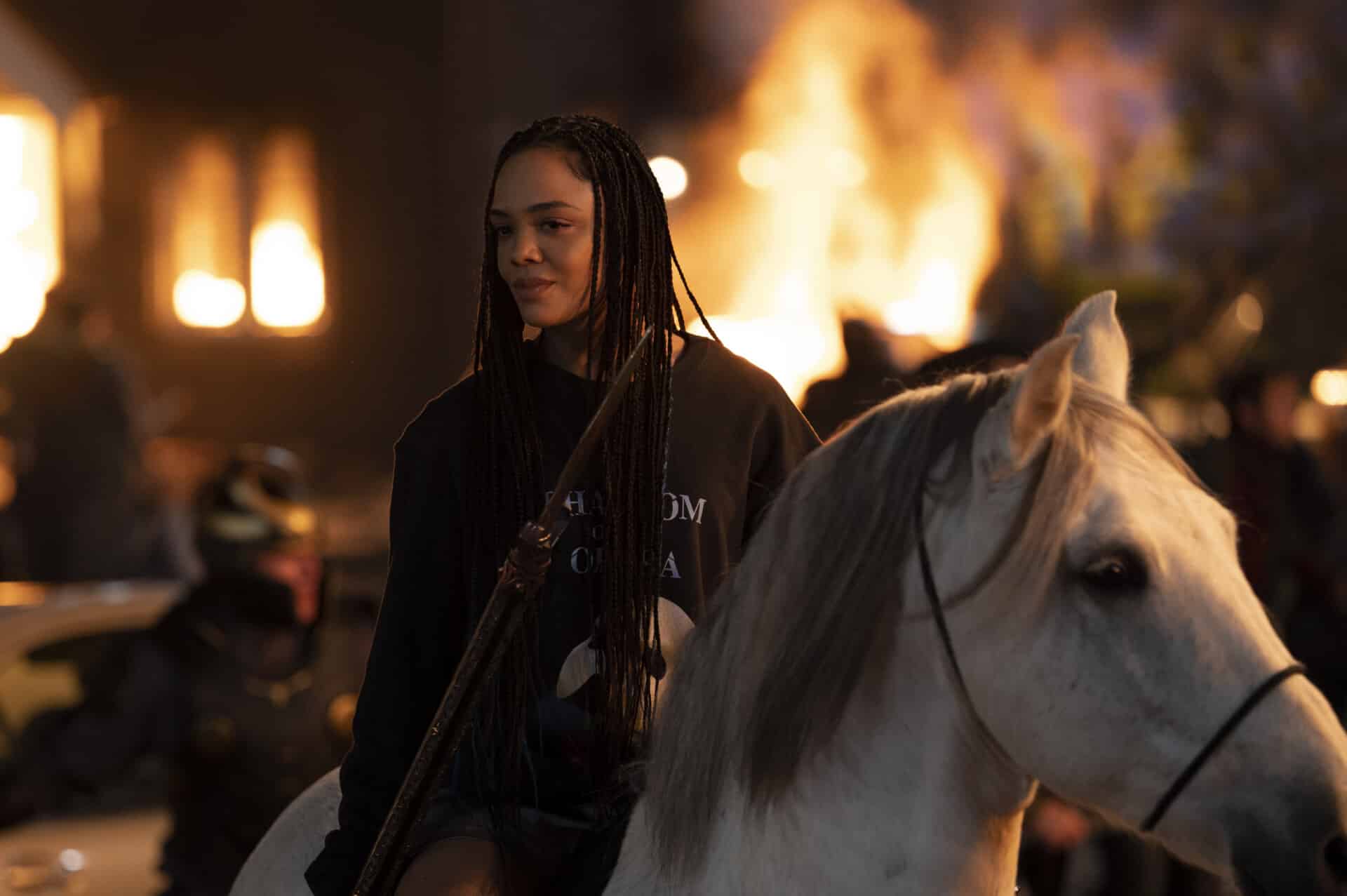
Despite the copious amounts of Guns N’ Roses on the soundtrack, Waititi isn’t offering a nostalgic invocation of 1980s children’s media in the style of something like Stranger Things or Ghostbusters: Afterlife. Instead, Love and Thunder feels very much like an actual example of that now largely defunct genre of film, which included a variety of films at a variety of levels of quality, from E.T. the Extra-Terrestrial to The Goonies to The NeverEnding Story to even The Princess Bride.
The film itself is structured as a story told to children, as if to reinforce this point. The framing device has Korg, played by the co-writer and director Waititi, essentially narrating the story to a bunch of children. Korg’s narration is a key element of Love and Thunder, a stylistic choice that distinguishes the film from any prior entry in the Marvel Cinematic Universe. The closest point of comparison is Tony Stark’s (Robert Downey Jr.) narration of Iron Man 3 to Bruce Banner (Mark Ruffalo).
Korg’s narration obviously directly evokes The Princess Bride, although there are minimal interjections from his target audience to derail the narrative. Nevertheless, Love and Thunder draws attention to its structure as a good-natured bedtime story by having Korg make a number of mistakes, such as confusing Jane Foster (Natalie Portman) with “Jane Fonda.” While Korg’s narration provides a nice vehicle for exposition, it also imposes a fairytale structure on the adventure.
Love and Thunder comes back repeatedly to the idea of telling stories to children. Trying to comfort the children abducted by Gorr the God Butcher (Christian Bale), Thor (Chris Hemsworth) recounts details of his previous adventures to reassure them. After the kids amuse themselves by retelling the events of Avengers: Infinity War and Avengers: Endgame, Gorr himself shows up to tell his own grisly story complete with a prop. He also tells them his own dark origin story.
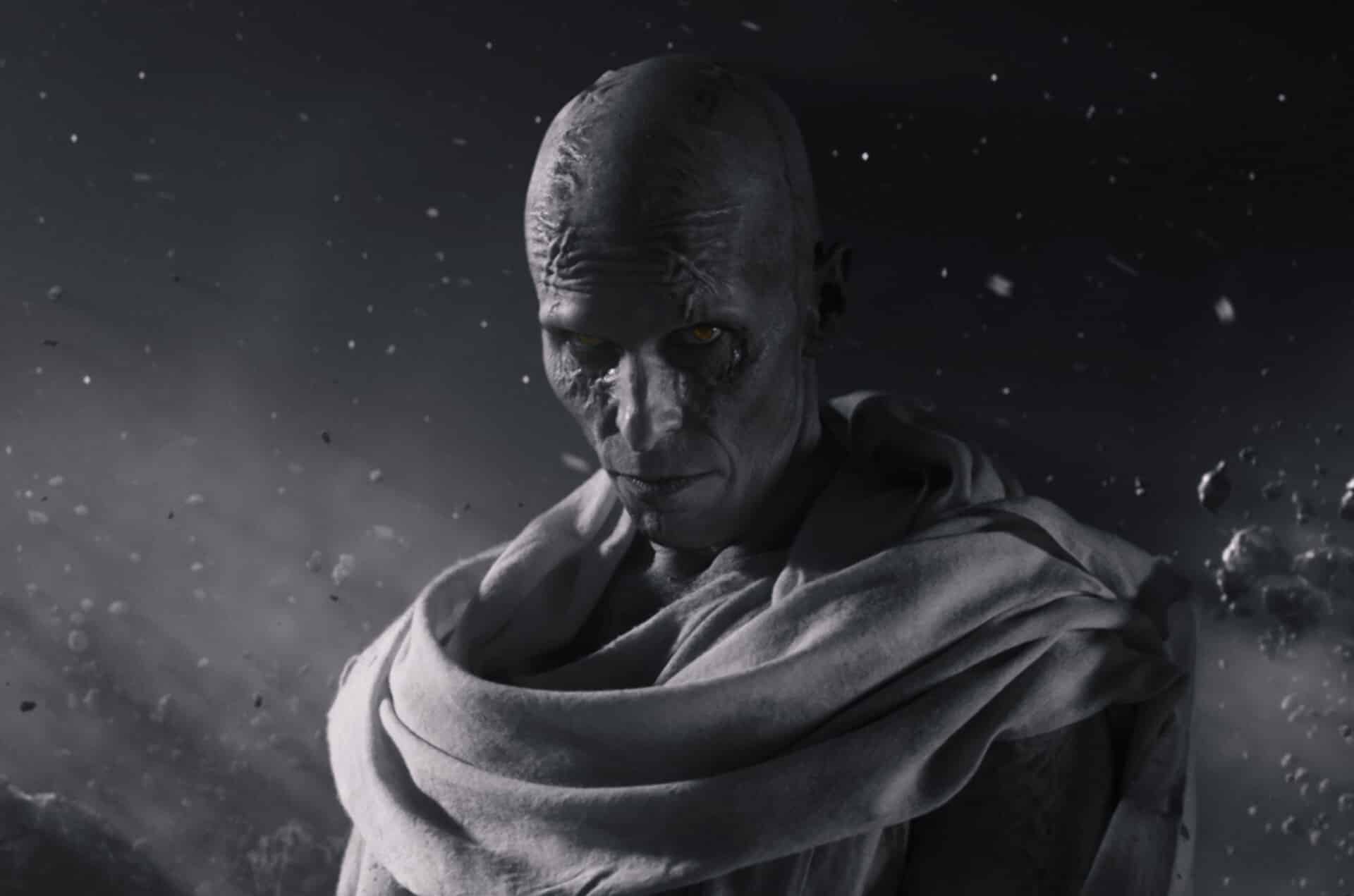
There was a weird minor moral panic over Sam Raimi’s work on Doctor Strange in the Multiverse of Madness, with some critics arguing whether the movie was unsuitable for children, despite the fact that Raimi pitched his horror at the perfect level for kids, evoking 1980s movies like Raiders of the Lost Ark or Gremlins. Waititi adopts a similar approach with Gorr and his shadow monsters, but makes a point to have the God Butcher directly target children.
When Gorr attacks New Asgard, his shadow monsters literally creep into the bedrooms of local children and steal them out from under their duvets. While the threat of missing children obviously resonates with parents, the particulars of the sequence seem designed to play on childhood fears: These are children literally swallowed by shadows in their beds in the dead of night. It is a sequence that plays heavily on children’s fear of the dark, with Waititi consulting his own children — along with the children of Bale and Portman — on the concept.
Much is made of Gorr’s abduction of these children, which includes the villain locking the kids in an absurdly exaggerated cage. With his kidnapping of these youngsters, his monochromatic appearance, and his gangly features, not to mention his morbid showmanship, Gorr bears more than a passing resemblance to the Child Catcher (Robert Helpmann) from Chitty Chitty Bang Bang, a source of nightmares for an entire generation of children.
Unlike a lot of those old-fashioned children’s films, Thor: Love and Thunder does not have a child protagonist. However, the film keeps cutting back to the children held hostage by Gorr. At the film’s climax, Thor grants these children his power so that they can fight back against the God Butcher. The closing montage affirms that Valkyrie (Tessa Thompson) is teaching them swordplay in Asgard. These choices feel of a piece with the “kids rule!” sensibility of the 1980s and 1990s.
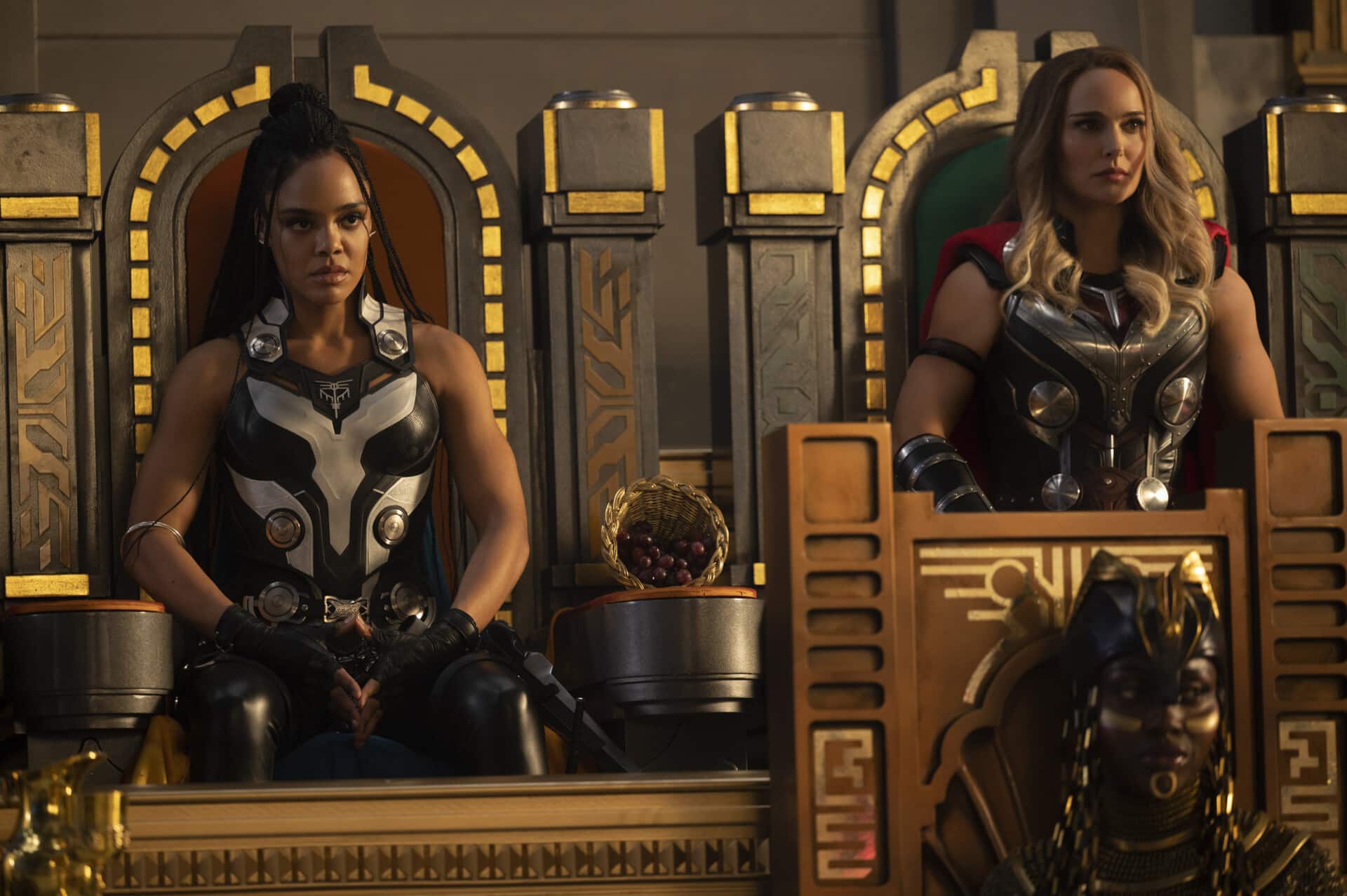
Love and Thunder ends with Thor becoming a surrogate father to Gorr’s daughter. In the film’s closing scene, Thor makes her breakfast and ties her shoelaces, before the pair embark on some epic smiting. Closing on the image of the two jumping into action together, with the young girl holding Mjolnir, Korg’s narration explains that she is “Love” and her adoptive father is “Thunder.” There’s a clear sense of wish fulfillment for younger audience members in seeing a kid as a superhero.
Love and Thunder is not the only film in the shared universe to adopt this approach. Black Panther was so effective in part because it was aware that these stories are often seen through the eyes of children. It opened like Love and Thunder does, with a child (Seth Carr) asking their father (Sterling K. Brown) to tell a story. Love and Thunder also resembles Guardians of the Galaxy, as both can be read as allegories about children confronting cancer-related mortality through a fantasy framework.
There is something very appealing in this, particularly in the context of the source material. In their original form, comic books were a type of mass entertainment considered “a kids’ medium.” That changed over time, as pricing and distribution models saw comic books attracting an older readership. The modern comic book-reading demographic certainly skews older. However, given the ubiquity of comic book blockbusters, it makes sense to bring these characters back to their roots.
When it comes to superhero stories, as with any other kind of story, there is an argument for a diversity in the type of stories being told. It is reasonable for a creator to play with the genre in interesting ways, without having to conform to a single abstract ideal. However, given the tendency of Marvel Studios productions like WandaVision, Loki, and The Falcon and the Winter Soldier to fumble when grappling with big adult ideas, it is refreshing to see the company play to its strengths.
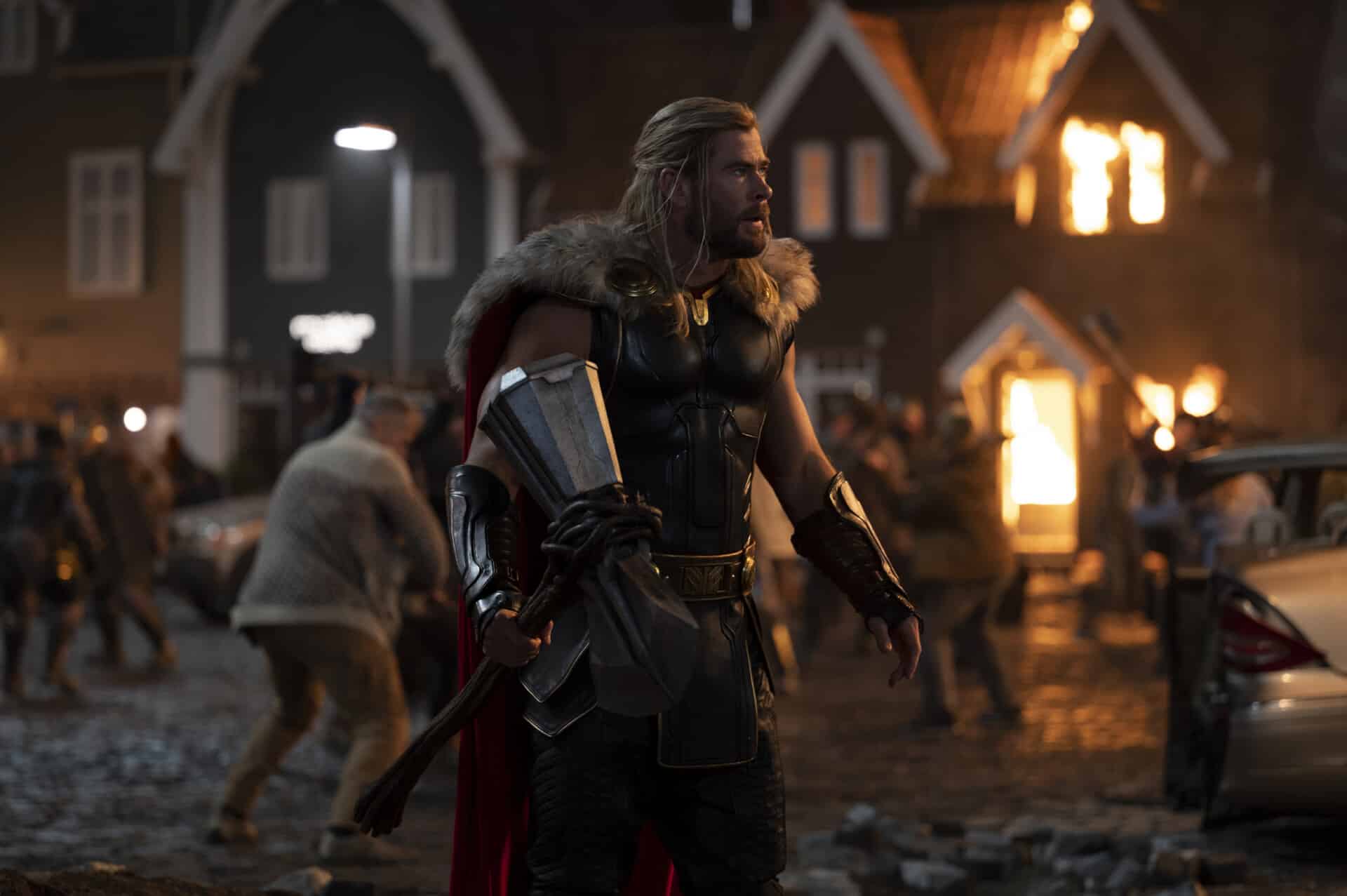
More than that, it is refreshing to see Love and Thunder acknowledge that it is playing to the franchise’s strength, rather than dressing up this recognizable childhood fantasy as something aimed primarily at adults. There has been a lot of debate in recent years about the perceived “infantilization” of mainstream pop culture, and perhaps some of that tension derives from the push to make childish things look more adult to make adults feel more comfortable obsessing over them. Love and Thunder is candid about being a kids’ film.
More to the point, recent years have seen Marvel Studios making a concerted effort to attract and recruit younger fans. Ms. Marvel is a show clearly aimed at a young and diverse audience, built around a teenage superhero fan. Eternals banked a great deal on a post-credits cameo from Harry Styles, in the hopes of courting his young female audience. Those watching the studio’s output are expecting a Young Avengers project sooner rather than later.
This makes sense. Iron Man premiered over 14 years ago. There is a famous quote, often misattributed to Harold Wilson, that a week is a long time in politics. If that is true, 14 years is an eternity in Hollywood. Actors like Chris Evans, Robert Downey Jr., and Scarlett Johansson have all aged out of these films. Teenagers who went on dates to see Iron Man are taking their kids to see Love and Thunder. Marvel will need those kids to buy their own tickets in a few years.
Sales for traditional superhero titles have been eclipsed within the United States by demand for kids’ books or manga. Writers like Gerry Conway have argued that some of this shrinkage has been down to a reluctance of their generation to “let it go” and to craft stories for the younger generation. It seems that Marvel Studios has learned some lessons from its source material and understands the importance of building movies towards younger audiences rather than aging with existing fans.
At its core, and at its best, Thor: Love and Thunder is unashamedly a kids’ movie. There’s something quite charming in that.

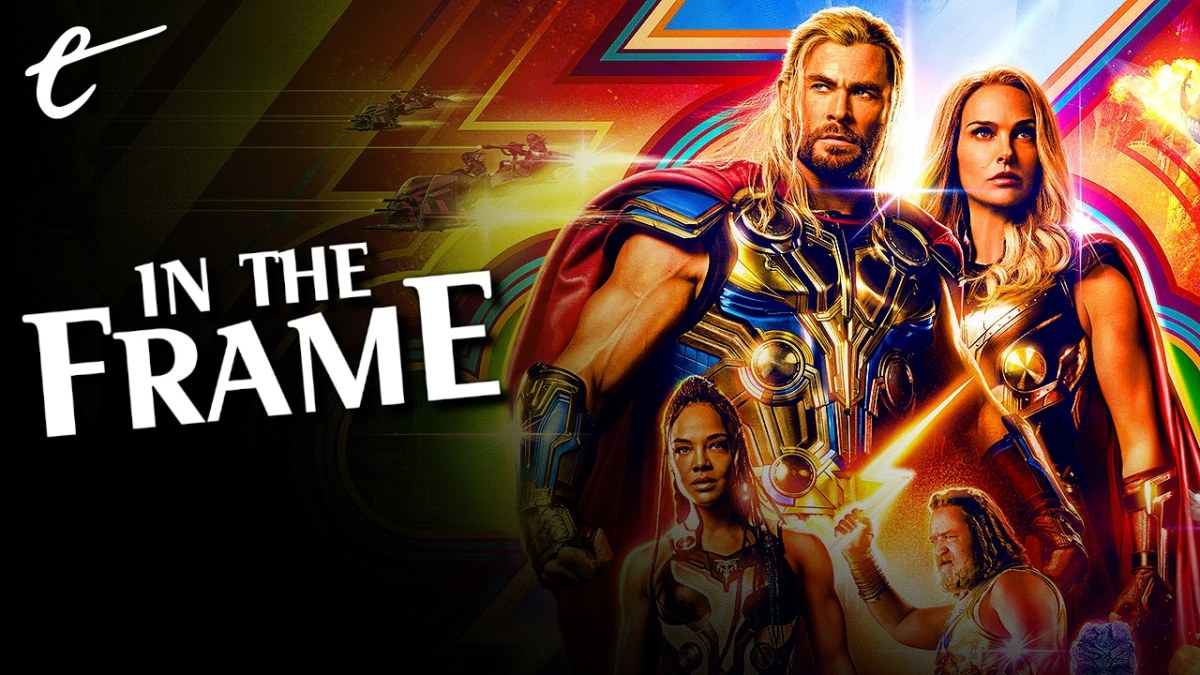




Published: Jul 8, 2022 11:00 am